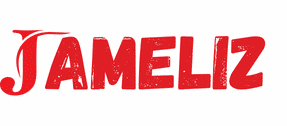President Donald Trump presented on Wednesday a set of long and broader basal tariffs in all countries and what he described as “friendly reciprocal” tariffs on nations that, according to which, according to nations were the worst criminals in commercial relations.
“My fellow citizens, this is the day of liberation,” Trump said from the Rosas de la Casa’s garden, claiming that the action will release the United States from the dependence of foreign goods.
“On April 2, 2025, it will be remembered forever as the day when the American industry was reborn, the day the United States fate was recovered and the day we began to make the United States return to rich,” he said.
The new measures, which Trump described as “historical”, include a minimum reference rate of 10% in all commercial partners and, in addition, more specific punitive levies in certain countries, including China, the European Union and Taiwan.
“We will charge you approximately half of what they are and we have been charging,” he said, and added, “because we are being very friendly.”
“This is not complete reciprocal. This is kind reciprocal,” he said.
Trump lifted a table with a list of nations and what will be the new US tariffs against them. In the upper part was China, which Trump said he would be affected with a tariff rate of 34%, since he said he charged 67%to the United States. (The new 34% rate would be at the top of an American rate of 20% on China already in force, which carries the total rate to 64%),),),),)

President Donald Trump speaks during an event to announce new rates in the Rosas Garden in the White House, on April 2, 2025, in Washington, DC
Mark Schiefelbein/AP
The 10% basal rate rate enters into force on April 5, according to the High officials of the White House. The “friendly reciprocal” rates enter into force on April 9 at 12:01 am, authorities said, and will affect approximately 60 countries.
The “reciprocal” tariffs are based not only on what was contained in the table, but also on the supposed manipulation of foreign exchange and barriers.
Trump described commercial deficits as a “national emergency” and that his actions will mark the beginning of what he called “the Golden Age of America.”
“In summary, chronic commercial deficits are no longer simply an economic problem. They are a national emergency that threatens our security and our same way of life. It is a great threat to our country,” he said.
Wednesday’s tariff announcement is a time in the creation of the president, but that comes with a significant political and economic risk.
Some experts warn that their movements could cause the economy to slide in a recession and the markets felt before Wednesday’s announcement, after weeks of agitation when Trump’s tariff policy changed and took shape.
The White House had been a mother in details before Wednesday’s event. A superior administration official said that the situation was “still very fluid” after the meetings of Wednesday morning and that Trump and his main advisors were trying to find some common land where they agreed.
Selina Wang reported some options discussed in recent weeks, said Selina Wang correspondent for the White House of ABC News, a flat rate of 20% in all imports; Different tariff levels for each country depending on its taxes on US products; o Tariffs about approximately 15% of countries with the highest commercial imbalances with the United States

President Donald Trump signs an executive order on rates, in the Rosas Garden in the White House in Washington, DC, on April 2, 2025.
Leah Millis/Reuters
Wednesday’s tariffs are based on taxes already imposed by the administration, even in steel and aluminum, as well as certain products from China, Canada and Mexico.
The actions have tense relations with Canada and Mexico, two key allies and neighbors. Prime Minister Mark Carney said last week, the deep relationship of the United States and Canada about economic, security and military problems had effectively ended.
Canada has promised retaliation rates and Mexico said it will give its response at the end of this week. The European Union also said it has a “strong plan to retaliate.”
But Trump’s officials and administration are moving forward, arguing that the United States has been unfairly “torn” by other nations for years and is time for reciprocity.
“For decades, our country has been looted, looted, raped and looted by near and distant nations, both friends and enemies,” Trump said Wednesday.

President Donald Trump speaks during a commercial announcement event in the Rosas Garden at the White House, on April 2, 2025, in Washington, DC
Somodevilla/Getty chip

President Donald Trump talks about his comments about tariffs in the Rosas garden in the White House in Washington, DC, on April 2, 2025.
Carlos Barria/Reuters
The painting he held had a column that showed what he called tariffs imposed so Trump suggested that they were the five main offensive countries next to a second column with what he said were the “reciprocal tariffs with discount” of the United States against them.
They include:
- China with 67% compared to 34%
- The European Union with 39% compared to 20%
- 90% Vietnam compared to 46%
- Taiwan at 64% compared to 32%
- Japan with 46% compared to 24%
The list includes a massive rate of 44% on Myanmar, currently staggering from a devastating earthquake, saying that the country imposes a rate of 88% to the United States.
The economy was the main issue for voters in the presidential elections of 2024, with the Americans blaming President Joe Biden for high prices and Trump promising to bring financial relief from families.
The administration has painted tariffs such as Panacea for the large written economy, arguing that any experience experienced in the short term will be compensated with what they predict that important impulses in manufacturing, the growth of employment and income of the government will be important.
“The works and factories will return to our country, and you see that it is already happening. We will supercart our national industrial base,” Trump said. “We will open foreign markets and break down the barriers of foreign trade. And, ultimately, more production in the home will mean a stronger competition and lower prices for consumers.”
But economists say it will be US consumers who have the worst part of the biggest costs to begin.
It is not clear how much maneuver is willing to give Trump to overcome what in the past called “a bit of disturbance.”
Already, just over two months in their second term, surveys show that their economy management is being received with rejection.
A Public Affairs Research Center of Associated Press-NORC survey Published on Monday he found that most Americans (58%) disapprove how Trump has been handling the economy.
In their commercial protectionist negotiations with other nations, specifically, 60% of Americans said they disapproved of their approach so far. It was his weakest problem in the survey among Republicans.

The president of the House of Representatives, Mike Johnson, calls questions about tariffs while gathering with journalists at a press conference, in Capitol, in Washington, on April 1, 2025.
J. Scott Applewhite / AP
Trump’s republican allies in Capitol Hill have said they are trusting the president, but acknowledged that there will be some uncertainty to begin.
“It can be rocky at the beginning, but I think this will make sense for Americans and help all Americans,” said the president of the House of Representatives, Mike Johnson, at his weekly press conference on Tuesday along with other members of the Republican leadership.
Meanwhile, the Democrats promised to fight against the “teeth and nails” tariffs and were trying to force a vote aimed at reducing their authorities to impose taxes on Canada.
“Trump has done many bad things. This is up there,” said the leader of the Senate minority, Chuck Schumer on Wednesday.
Mary Bruce, Katherine Faulders and Fritz Farrow from ABC News contributed to this report.





